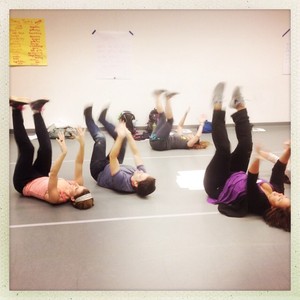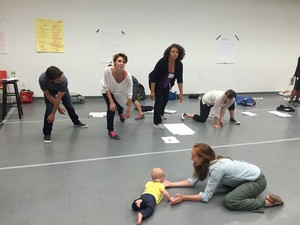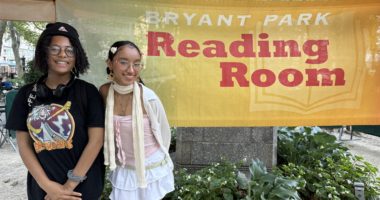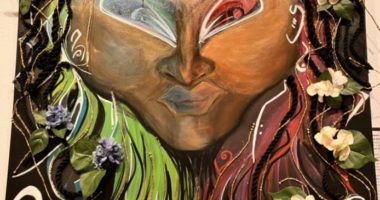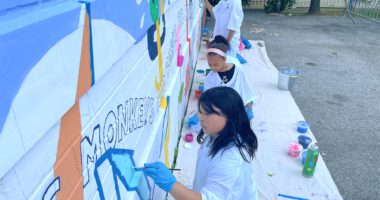Community-Word Project staff facilitated a workshop recently with the National Dance Institute (NDI) in Harlem, NYC. Program Director of Training & Internships Patti Chilsen and Community-Word Project Teaching Artist Katie Rainey teamed up to present a two-hour professional development seminar to the dancers of NDI. Its focus was poetry, not dance, however. And many of the NDI Teaching Artists were nervous from the start. Goes to show that professional artists can feel apprehensive when asked to explore a different art form. The workshop opened with a series of warm-ups, kinesthetically and linguistically oriented. The group created a list of vocabulary words that reminded them of dance: move, jump, twist, breath, etc. The participants were asked to free write for a few minutes, focusing on their first experiences with language and movement.

For this group of kinesthetic learners, the first movement experiences came more quickly to them than the language, but eventually everyone conjured up a memory and wrote. They then took a word from the vocabulary list and paired it with a gesture and a line that they wrote. Each person created a “mini performance piece” and shared it with the group.
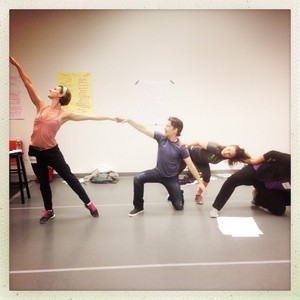
And that was only the warm up!

The session then moved on to one of two main activities of the day, which called for the Teaching Artists to not only write poems, but to experiment with structure and language by creating multiple poems in different styles. The facilitators created four different “Poetry Stations” throughout the studio, each focusing on a different poetic style: Concrete, Destruction, Spoken Word and Narrative Poetry. The Teaching Artists used their free writing from earlier in the day as a foundation for their poems, building off their images and memories. They produced poems in the shape of objects and people, poems meant to be read aloud, or poems found inside text like these erasure poems.
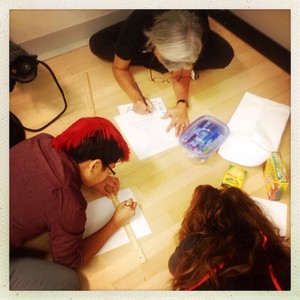
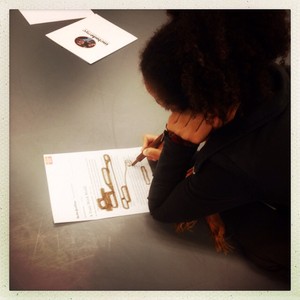
This activity allowed them to play with language, rather than simply composing pieces from scratch. At every station they were given “toolkits”. Some played with sound and rhyme. Others played with composition, type font, and line breaks. This activity created a level learning field for all types of experience with writing poetry. Those who were new to poetry were given the tools to create so that they didn’t feel lost or confused. Those who felt more confident writing poetry had tools to build upon their experience.

The Teaching Artists happily shared their creations at the end of the activity. The facilitators asked that they each pick their favorite line and pair a gesture to it before coming together to share their creations. After we heard a few poems, each in a different style, the facilitators split the room into groups of five and we moved onto the second main activity of the day: Collaborative Performance Pieces. The groups were given an assignment to take each of their individual lines from their writing and combine them with the other group member’s lines to create a community poem. Once they revised and ordered the lines the way they wanted, they had to create a collaborative performance piece that included the community poem and movement.
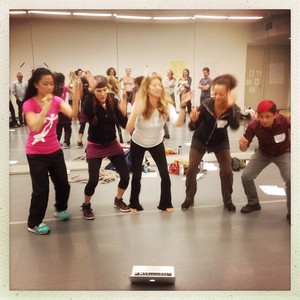

The participants were given time to collaborate and rehearse before coming together and sharing the performances. What they created in such a small span of time was inspiring.
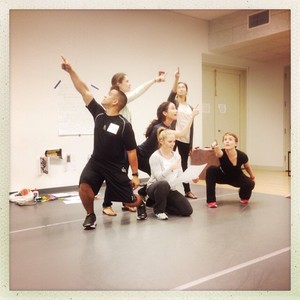


After the performances, Patti and Katie led the group in a reflection on the day, followed by an in-depth Q&A about translating what we had accomplished into the classroom. The participants left the workshop invigorated and excited about the 2015-16 academic year.

“CWP’s professional development workshop was the ideal way to launch our year at National Dance Institute! Patti and Katie’s poetry workshop modeled effective teaching practices and inspired our staff to embark on a year of exploring poetry through music and dance. The experiential nature of the workshop ignited our own creativity and gave us confidence to delve deeply into such a rich topic.” -Emily Meisner, Director of Professional Development
